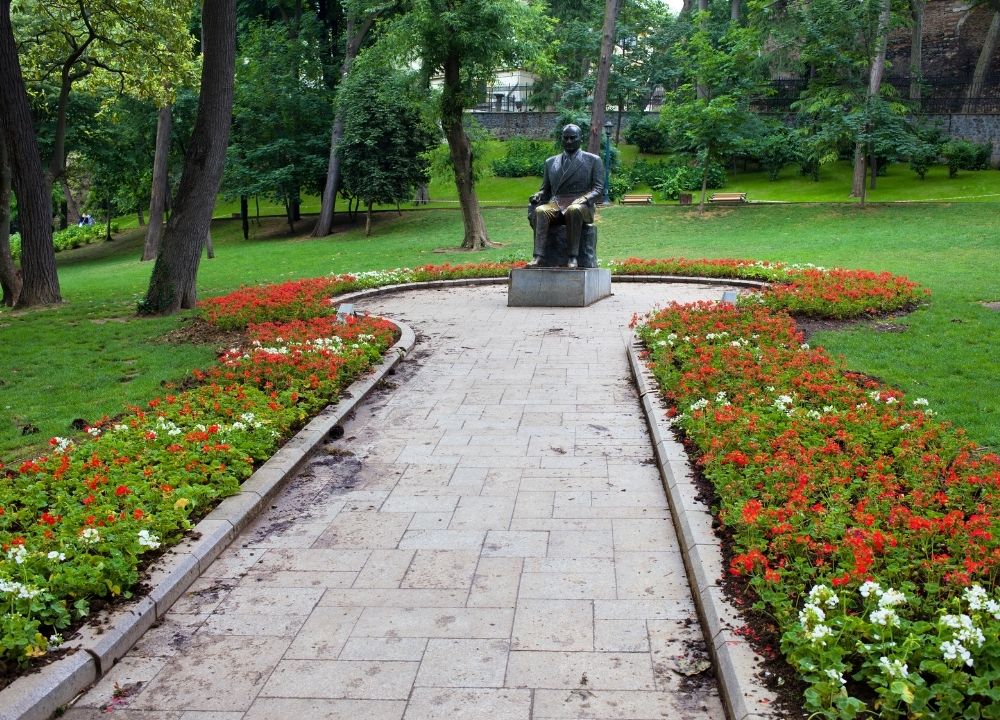Gülhane Park: History, Story and Places to Visit

Gülhane Park is one of the oldest and largest city parks in Istanbul. Built as the outer garden of Topkapi Palace in the historic Sultanahmet district, the park was used as a recreation and entertainment area for sultans and courtiers during the Ottoman Empire. Opened to the public in 1912, Gülhane Park has been a favorite place for Istanbulites and tourists ever since.
The name of the park derives from the Persian words "rose" and "hane" and means "Rose House". The park, which has undergone various arrangements and restorations throughout history, today fascinates its visitors with both its natural beauties and historical buildings.
Gülhane Park is one of the most special places in Istanbul with its historical and natural beauties. It is an ideal place for those who want to take a peaceful walk and trace the traces of history. When you visit Gülhane Park, you can experience both the splendor of the Ottoman Empire and the calming effect of nature together. You can witness the rich history of Istanbul by visiting this fascinating park before or after a visit to Deraliye Terrace Restaurant.
Location and How to Visit Gülhane Park?
Gülhane Park is located in the historical peninsula of Istanbul, in Fatih district. As an extension of Topkapı Palace, it starts from Gülhane Gate and extends to Sarayburnu. Transportation to the park is quite easy; you can reach the park by getting off at the Gülhane stop of the tram line or by taking a short walk from Sultanahmet Square.
The best times to visit the park are spring and fall. During these periods, the natural beauty of the park is at its peak. While walking in the park, you can enjoy the view by sitting on the benches along the wide paths and pathways.
What's in Gülhane Park?
Gülhane Park attracts attention with its rich flora and fauna. There are many tree species such as plane trees, chestnut trees and pine trees in the park. In addition, various types of flowers and regular landscaping works make the park look colorful and lively in every season.
There are many historical buildings and monuments in the park. The most remarkable of these is the Column of Goths, which belongs to the Istanbul Archaeological Museums complex and is located in the park. This column dates from the Roman period and dates back to the 3rd century AD. In addition, fountains and pools at various points in the park add to its peaceful atmosphere.
Historical Importance of Gülhane Park
Gülhane Park stands out not only for its natural beauty but also for its historical importance. The park witnessed important events during the last periods of the Ottoman Empire. In 1839, the Tanzimat Edict was read and proclaimed in Gülhane Park. This edict is considered to be the beginning of the modernization process in the Ottoman Empire and for this reason the park is also known as "Gülhane Hatt-ı Hümayunu". The Tanzimat Edict brought radical changes in the legal system, administrative structure and social life of the Ottoman Empire. Emphasizing equality, justice and property rights, this edict symbolizes the beginning of Westernization movements in the Ottoman Empire.
Gülhane Park also hosted various cultural and social events of the Ottoman Empire. Frequently visited by sultans and courtiers, the park was one of the most important social and cultural meeting points of the period. The historical texture of the park bears the traces of the changes and transformations in Istanbul of that period.
During the Republican period, Gülhane Park was opened to public use and became a social living space. After the proclamation of the Republic, Mustafa Kemal Atatürk organized various events in the park and held meetings with the public. During this period, the park became an important symbol witnessing the development process of modern Turkey.
The Column of the Goths in Gülhane Park dates back to the Roman Empire and offers important clues about the ancient times of Istanbul. This column was erected to commemorate the Roman Emperor Claudius II's victory over the Goths and still contributes to the historical atmosphere of the park today.
Another important building in the park is the Regimental Pavilion. Used by sultans during the Ottoman period to watch the processions, this pavilion is another element that enriches the historical texture of the park. This building, which is now used by Istanbul University, is one of the important parts of the historical and cultural heritage of Gülhane Park.


